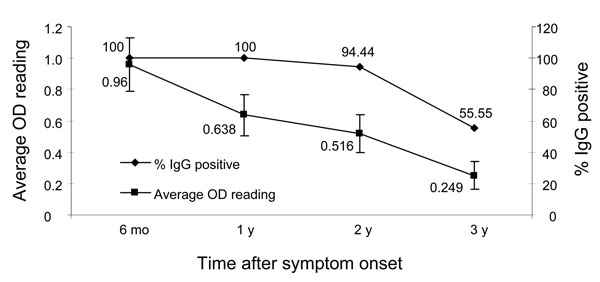Volume 13, Number 10—October 2007
Dispatch
Duration of Antibody Responses after Severe Acute Respiratory Syndrome
Figure 2

Figure 2. Change of immunoglobulin G (IgG) patterns among 18 convalescent severe acute respiratory syndrome patients with a complete collection of sequential serum samples at the time points shown. The 18 patients were selected from the cohort of 176 patients for whom transmission history was known. OD, optical density.
Page created: July 02, 2010
Page updated: July 02, 2010
Page reviewed: July 02, 2010
The conclusions, findings, and opinions expressed by authors contributing to this journal do not necessarily reflect the official position of the U.S. Department of Health and Human Services, the Public Health Service, the Centers for Disease Control and Prevention, or the authors' affiliated institutions. Use of trade names is for identification only and does not imply endorsement by any of the groups named above.